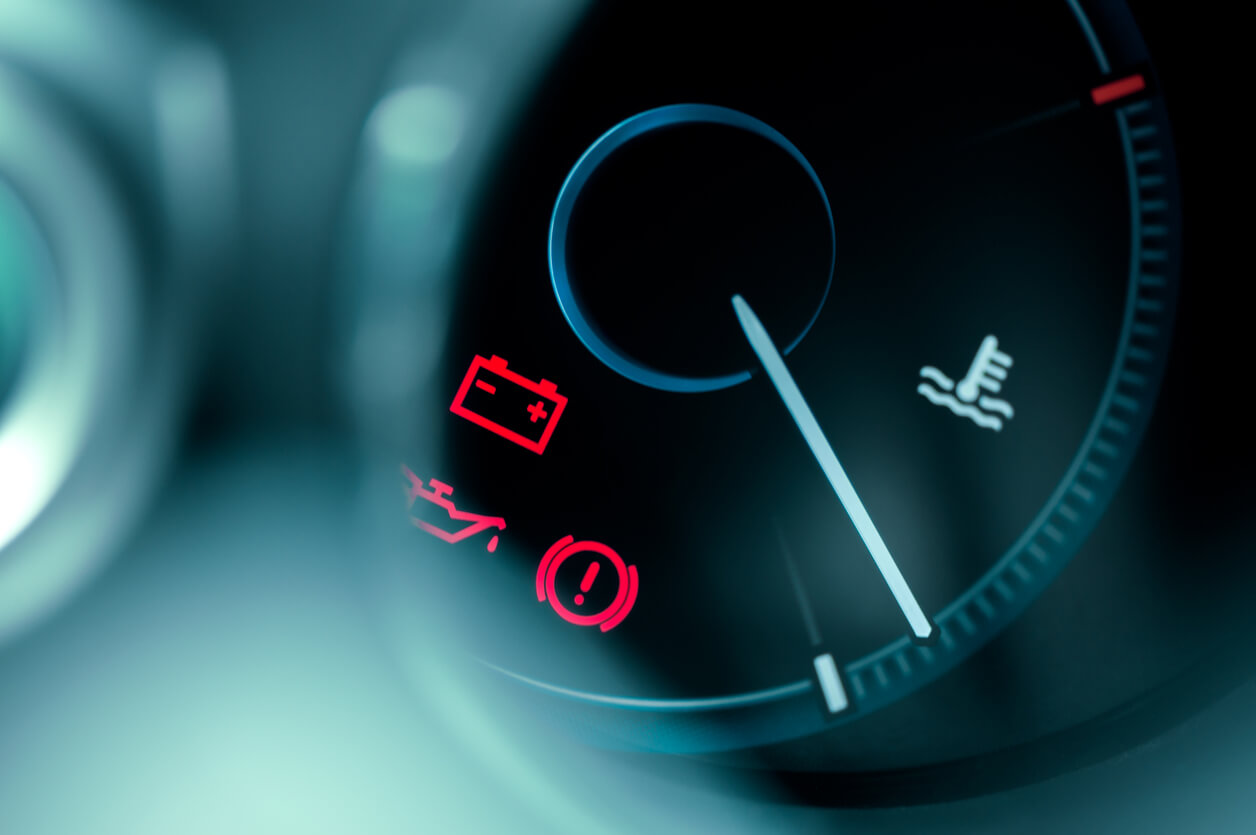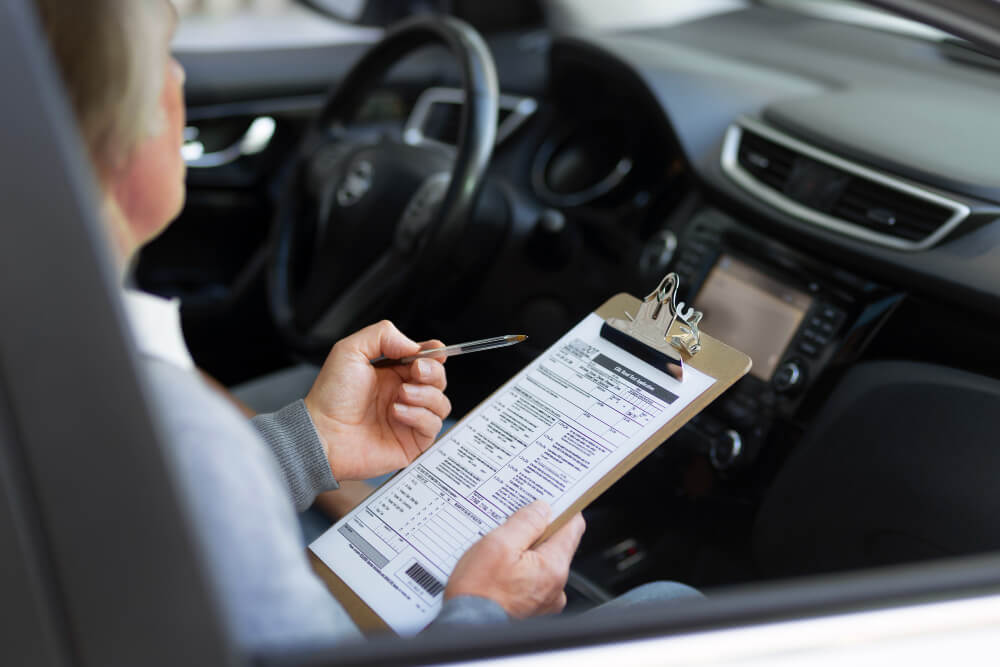Introduction
Decode the meaning behind car warning indicator symbols and ensure your vehicle’s safety. Visit Schumacher Used for expert guidance.
We’ve all been there: You’re driving along while enjoying the scenery when you hear a beep, and when you look down, a symbol (Car Warning Lights) appears on your dashboard. You begin to speculate as to what your car might be experiencing.
On your car’s dashboard, some symbols are simpler to understand than others. In the event that you need to stop and seek assistance, it’s crucial to understand exactly what these warning lights represent.
The Importance of Different Warning Lights
Most warning lights flash briefly when you turn on the car’s ignition to verify that the bulbs are functioning correctly; however, they should turn off after the engine has started. If any of them remains on or is illuminated after your trip is in progress, it could indicate that you have a problem with your vehicle which requires attention.
There’s a range of warning lights on the dashboard within your vehicle, including the warning light for oil pressure or the engine management light. These are designed to catch your attention when something isn’t working correctly. Warning lights on the dashboard are displayed in various colors that usually indicate a severe issue. Stay informed about your car’s warning indicators and address issues proactively. Schumacher Used is here to help you navigate through these indicators with confidence.
What to do?
Whatever the color, acting faster than later can help to stop the problem from getting much worse or damaging your vehicle. It is best to stop your vehicle as quickly as possible and then consult the vehicle’s manual for guidance before proceeding with your trip if you’re unsure of what the warning is about.
What meaning of different Car Dashboard Lights?
Door open

This icon appears whenever one or several vehicle doors aren’t shut incorrectly. Some vehicles will also show the exact door, which needs to be rechecked.
Engine temperature
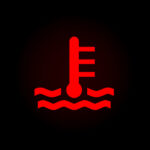
The engine temperature warning light indicates an engine overheating. It lets us know that the vehicle has been used for longer than it should. It can also be switched on if there is an absence of cooling water or a malfunctioning cooling system. The fuel management system uses engine coolant temperature sensors to monitor engine temperature. If the coolant is not of good quality and is blocked, it can cause a problem in cold weather, where temperatures fall below the freezing threshold.
Engine oil pressure
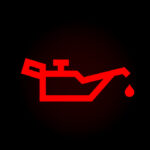
An engine’s oil pressure can be determined with the help of a device called an oil pressure sensor. The oil pressure light indicates that there isn’t sufficient oil inside the motor. Sometimes, even when the proper quantity of lubricant has been added, the oil will be consumed at more excellent rates because of evaporation. It could also leak through oil plugs or seals.
Another reason could be that the pump hasn’t been circulated enough—these fluids aid in lubricating the surface of your car.
Battery alert
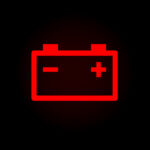
This icon will be displayed whenever the voltage level is lower than usual. It could be due to an inoperable alternator, low battery levels, or loose connections.
Tire Pressure Monitoring System
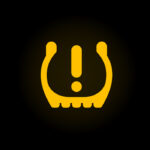
Certain cars have a TPMS (tire pressure monitor system). The TPMS sensor is a wireless device that monitors the tire’s internal pressure and temperature and sends that information to the car. The icon is displayed when there is a low pressure within one of the tires.
Engine warning light
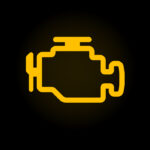
The primary reason of Check Engine Light could be the Emissions System Problem. Vehicles today are built with systems that limit exhaust emissions to reduce the impact of pollution on the environment. The indicator light comes on if there’s not enough oxygen or more oxygen is passing out.
Another reason that causes the warning light on the engine illuminates is an improperly installed sensor for mass airflow. It can also be because of a malfunctioning ignition system.
Security alert
Most car keys now have an embedded chip to protect against car theft. The security icon will come up on the dashboard when there is a glitch reading this chip. The car won’t begin until the system correctly recognizes the key in this situation.
Service reminder
Most cars today have this useful icon, which turns on when maintenance needs to be completed. After you have taken your car to the mechanic, they will reset the icon.
ABS (Anti-Lock Braking System)
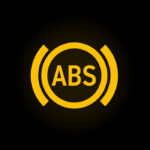
Anti Lock Brake System is created to maintain contact between the road and your vehicle. It lets you make an emergency stop quickly and without delay. If you see the warning light, the ABS is not functioning correctly. In this situation, the brakes are working fine, but it’s impossible to perform the emergency brake.
Automatic shift lock warning light
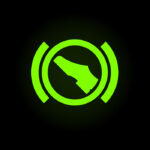
Automatic cars require that you apply the brake when changing gears from neutral. Most cars display this symbol if you attempt to change the gears (from neutral) without pressing the brake pedal.
Fuel indicator
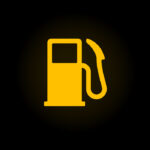
The fuel indicator symbol indicates how much fuel is remaining inside the automobile. Automobiles with manual systems feature an opening at the bottom of the filter, letting the water run out on the opening.
When the filter is empty immediately, and the light is switched on, it could mean a malfunction or error is detected and needs immediate attention. The warning light should not be ignored because it may signal the system is in trouble and begin leaking into the engine. This warning light goes out once the water has been drained.
Handbrake icon
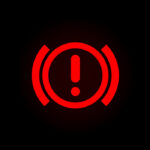
This symbol is displayed on your console if you release your hand brakes. If the light stays on even after you release the hand brake, it could indicate a problem with the brake system, including an issue with the brake fluid levels.
Seatbelt warning light
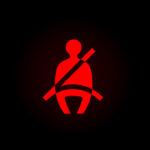
Seatbelts are made to protect you from severe injuries in the event of accidents. They prevent your body from moving excessively. This is the most commonly used icon displayed on the instrument console of the speedometer. It appears when you’re not buckled up while driving your vehicle.
Airbag dashboard

If the icon doesn’t disappear after the car starts, it signifies a problem with the vehicle’s airbag system. It might not activate in the event of an accident and could result in serious injuries. This issue can be fixed through an authorized repair center.
Fog lamp
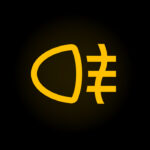
It is often difficult to determine what’s in front of you with a limited view. To prevent bad weather, automakers have created fog light systems. Fog light allows us to be able to see through the fog and to drive with ease.
The lights are positioned below other lights to prevent reflection. As with other lights, the light is on the dashboard, which turns on, and the fog light becomes activated.
Headlamp or tail light
It shows that either the taillight or headlamp is not working. In reality, the lamp-out warning is typically represented by something that resembles an ecliptic with rays surrounding it.
Vehicle security
Security light generally comes on when the security system in the car is on the brink of failing or has already been unable to function correctly. It is also common that the light comes to life after the battery has gone out of service. If the security light comes on, there is a good possibility that the vehicle will not start after it is turned off.
Traction control
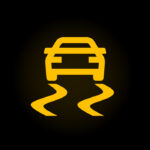
The stability and traction control lights will come on when the system is turned on. Press the gas in the event of a prolonged rainstorm or snow, and the odds are that you’ll notice the dashboard light blinking. If they come on while your vehicle is moving at a moderate speed on dry surfaces, there could be an issue with the system. The most likely culprit is a speed sensor for the wheels.
Windshield washer

This means that the washer fluid in the wiper has gone down and needs to be replenished. Modern vehicles have tanks full of soapy water that helps you keep your windshield clean. When you’ve filled the tank, the indicator light should go off instantly.
If the light remains on, it could suggest that your car has an issue with the sensor. If this is the scenario, it is essential to have your sensor checked, and should it be found to be defective, then get it replaced.
Engine immobilizer
The symbol for immobilizer or key signifies that the vehicle cannot recognize its keys. Sometimes, it may come on because of another issue in the immobilizer system.
Power steering control
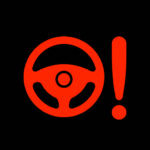
Automobiles that have an electric power steering system have this warning indicator. This is simply a sign that there’s a problem with the electric power steering unit.
Electronic Power Control (EPC)
As the name implies, the EPC light signals a problem with the car’s electrical energy control. This light can be seen on selected cars. The EPC light usually is associated with the ABS light, which shuts down its functions.
Economy Mode Symbol

Most fuel-efficient vehicles have the “ECO” symbol that lights up, signaling that the car is running at its maximum efficiency in terms of fuel consumption. Some vehicles are even advanced enough to shut down the engine’s cylinders after you’ve reached the same speed. In some cars, a toggle switch gives drivers the ability to activate or deactivate the Eco Mode.
Car warning lights troubleshooting
Car warning lights are crucial indicators of potential vehicle problems. If you observe a warning light, it is essential to take note of its meaning and act accordingly. Depending on the indicator light, you may need to take your vehicle to a mechanic or simply check the fluid level. However, some warning lights may indicate more serious issues requiring immediate attention. There are a few troubleshooting steps you can take if you’re unsure what a particular light means. Consult the owner’s manual or search online for the meaning of the particular light. If that doesn’t work, try driving for a while to see if the light turns off by itself. If not, you should have your vehicle inspected by a professional. By taking these measures, you can ensure that you are aware of any potential problems with your vehicle and take appropriate action.
Understand the significance of car warning lights and indicators to maintain optimal vehicle performance. Trust Schumacher Used for expert insights.
Bottom line
As indicated by the car dashboard icons, the importance of the situation can be identified and assessed by how it is shown and presented. The colors play an important role in telling the importance of any dashboard light!
You now have all the information you require regarding the various car dashboard lights found on automobiles. This blog should clarify the numerous dashboard indicators used by automobiles.
Stay on top of your car’s dashboard warning lights and indicators with Schumacher Used. Our team provides valuable information for a smooth driving experience.
Discover our insightful blog on “What to Look for When Buying a Used Car” at Schumacher Used. Gain valuable tips and advice to make an informed decision and find the perfect pre-owned vehicle that meets your needs and budget. Visit our blog now for expert insights.
Schumacher Used: Your trusted source for high-quality used cars in New Jersey. Find your perfect vehicle today!

